Global Unified Technology Sales (GUTS) is moving toward a “bring your own device” (BYOD) model for employee computing. Employees can use traditional desktop computers in their offices. They can also use a variety of personal mobile computing devices such as tablets, smartphones, and laptops. The new computing model introduces some security risks that GUTS is attempting to address. The company wants to ensure that any devices connecting to their servers are properly registered and approved by the Information Technology department. Create a complete ERD to support the business needs described below: Every employee works for a department that has a department code, name,mail box number, and phone number. The smallest department currently has5 employees, and the largest department has 40 employees. This system willonly track in which department an employee is currently employed. Veryrarely, a new department can be created within the company. At such times,the department may exist temporarily without any employees. For everyemployee, an employee number and name (first, last, and middle initial) arerecorded in the system. It is also necessary to keep each employee’s title. An employee can have many devices registered in the system. Each device isassigned an identification number when it is registered. Most employees haveat least one device, but newly hired employees might not have any devicesregistered initially. For each device, the brand and model need to be recorded.Only devices that are registered to an employee will be in the system. Whileunlikely, it is possible that a device could transfer from one employee to However, if that happens, only the employee who currently owns thedevice is tracked in the system. When a device is registered in the system, thedate of that registration needs to be recorded. Devices can be either desktop systems that reside in a company office or mobile Desktop devices are typically provided by the company and areintended to be a permanent part of the company network. As such, eachdesktop device is assigned a static IP address, and the MAC address for thecomputer hardware is kept in the system. A desktop device is kept in a staticlocation (building name and office number). This location should also be keptin the system so that, if the device becomes compromised, the IT departmentcan dispatch someone to remediate the problem. For mobile devices, it is important to also capture the device’s serial number,which operating system (OS) it is using, and the version of the OS. The ITdepartment is also verifying that each mobile device has a screen lock enabledand has encryption enabled for data. The system should support storinginformation on whether or not each mobile device has these capabilities
Global Unified Technology Sales (GUTS) is moving toward a “bring your own device” (BYOD) model for employee computing. Employees can use traditional desktop computers in their offices. They can also use a variety of personal mobile computing devices such as tablets, smartphones, and laptops. The new computing model introduces some security risks that GUTS is attempting to address. The company wants to ensure that any devices connecting to their servers are properly registered and approved by the Information Technology department. Create a complete ERD to support the business needs described below: Every employee works for a department that has a department code, name,mail box number, and phone number. The smallest department currently has5 employees, and the largest department has 40 employees. This system willonly track in which department an employee is currently employed. Veryrarely, a new department can be created within the company. At such times,the department may exist temporarily without any employees. For everyemployee, an employee number and name (first, last, and middle initial) arerecorded in the system. It is also necessary to keep each employee’s title. An employee can have many devices registered in the system. Each device isassigned an identification number when it is registered. Most employees haveat least one device, but newly hired employees might not have any devicesregistered initially. For each device, the brand and model need to be recorded.Only devices that are registered to an employee will be in the system. Whileunlikely, it is possible that a device could transfer from one employee to However, if that happens, only the employee who currently owns thedevice is tracked in the system. When a device is registered in the system, thedate of that registration needs to be recorded. Devices can be either desktop systems that reside in a company office or mobile Desktop devices are typically provided by the company and areintended to be a permanent part of the company network. As such, eachdesktop device is assigned a static IP address, and the MAC address for thecomputer hardware is kept in the system. A desktop device is kept in a staticlocation (building name and office number). This location should also be keptin the system so that, if the device becomes compromised, the IT departmentcan dispatch someone to remediate the problem. For mobile devices, it is important to also capture the device’s serial number,which operating system (OS) it is using, and the version of the OS. The ITdepartment is also verifying that each mobile device has a screen lock enabledand has encryption enabled for data. The system should support storinginformation on whether or not each mobile device has these capabilities
Computer Networking: A Top-Down Approach (7th Edition)
7th Edition
ISBN:9780133594140
Author:James Kurose, Keith Ross
Publisher:James Kurose, Keith Ross
Chapter1: Computer Networks And The Internet
Section: Chapter Questions
Problem R1RQ: What is the difference between a host and an end system? List several different types of end...
Related questions
Question
Global Unified Technology Sales (GUTS) is moving toward a “bring your own device” (BYOD) model for employee computing. Employees can use traditional desktop computers in their offices. They can also use a variety of personal mobile computing devices such as tablets, smartphones, and laptops. The new computing model introduces some security risks that GUTS is attempting to address. The company wants to ensure that any devices connecting to their servers are properly registered and approved by the Information Technology department.
- Create a complete ERD to support the business needs described below:
- Every employee works for a department that has a department code, name,mail box number, and phone number. The smallest department currently has5 employees, and the largest department has 40 employees. This system willonly track in which department an employee is currently employed. Veryrarely, a new department can be created within the company. At such times,the department may exist temporarily without any employees. For everyemployee, an employee number and name (first, last, and middle initial) arerecorded in the system. It is also necessary to keep each employee’s title.
- An employee can have many devices registered in the system. Each device isassigned an identification number when it is registered. Most employees haveat least one device, but newly hired employees might not have any devicesregistered initially. For each device, the brand and model need to be recorded.Only devices that are registered to an employee will be in the system. Whileunlikely, it is possible that a device could transfer from one employee to However, if that happens, only the employee who currently owns thedevice is tracked in the system. When a device is registered in the system, thedate of that registration needs to be recorded.
- Devices can be either desktop systems that reside in a company office or mobile Desktop devices are typically provided by the company and areintended to be a permanent part of the company network. As such, eachdesktop device is assigned a static IP address, and the MAC address for thecomputer hardware is kept in the system. A desktop device is kept in a staticlocation (building name and office number). This location should also be keptin the system so that, if the device becomes compromised, the IT departmentcan dispatch someone to remediate the problem.
- For mobile devices, it is important to also capture the device’s serial number,which
operating system (OS) it is using, and the version of the OS. The ITdepartment is also verifying that each mobile device has a screen lock enabledand has encryption enabled for data. The system should support storinginformation on whether or not each mobile device has these capabilities - Implement the above in a DBMS specifically using MySQL. Perform some
queries and save them in your implementation
Expert Solution
This question has been solved!
Explore an expertly crafted, step-by-step solution for a thorough understanding of key concepts.
This is a popular solution!
Trending now
This is a popular solution!
Step by step
Solved in 2 steps with 1 images

Recommended textbooks for you
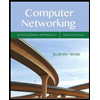
Computer Networking: A Top-Down Approach (7th Edi…
Computer Engineering
ISBN:
9780133594140
Author:
James Kurose, Keith Ross
Publisher:
PEARSON
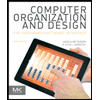
Computer Organization and Design MIPS Edition, Fi…
Computer Engineering
ISBN:
9780124077263
Author:
David A. Patterson, John L. Hennessy
Publisher:
Elsevier Science
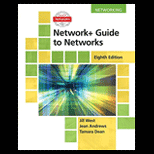
Network+ Guide to Networks (MindTap Course List)
Computer Engineering
ISBN:
9781337569330
Author:
Jill West, Tamara Dean, Jean Andrews
Publisher:
Cengage Learning

Computer Networking: A Top-Down Approach (7th Edi…
Computer Engineering
ISBN:
9780133594140
Author:
James Kurose, Keith Ross
Publisher:
PEARSON

Computer Organization and Design MIPS Edition, Fi…
Computer Engineering
ISBN:
9780124077263
Author:
David A. Patterson, John L. Hennessy
Publisher:
Elsevier Science

Network+ Guide to Networks (MindTap Course List)
Computer Engineering
ISBN:
9781337569330
Author:
Jill West, Tamara Dean, Jean Andrews
Publisher:
Cengage Learning
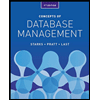
Concepts of Database Management
Computer Engineering
ISBN:
9781337093422
Author:
Joy L. Starks, Philip J. Pratt, Mary Z. Last
Publisher:
Cengage Learning
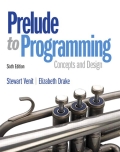
Prelude to Programming
Computer Engineering
ISBN:
9780133750423
Author:
VENIT, Stewart
Publisher:
Pearson Education
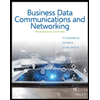
Sc Business Data Communications and Networking, T…
Computer Engineering
ISBN:
9781119368830
Author:
FITZGERALD
Publisher:
WILEY